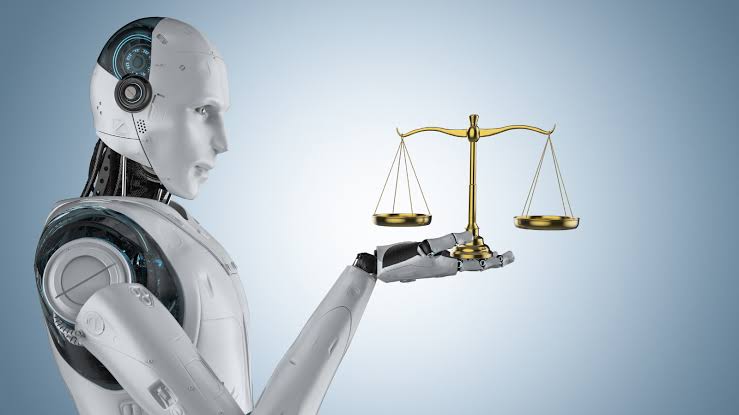Artificial Intelligence is one of the most important technologies of the 21st century. By July 2025, many countries use it more in law enforcement. AI tools like facial recognition, predictive policing, and real-time surveillance help police work faster and smarter. But these tools also raise ethical, legal, and social concerns that people are still discussing worldwide.
As countries like the United States, Canada, the UK, China, and several EU members adopt AI-powered law enforcement technologies, questions about transparency, accountability, and potential misuse are becoming central to the public discourse. Understanding both the advantages and drawbacks of AI in policing is crucial as societies navigate this delicate intersection of innovation and civil liberties.
Enhancing Operational Efficiency
One of the main benefits of AI in law enforcement is its capacity to enhance operational efficiency. AI can process massive volumes of data far more quickly than human officers ever could. For instance, surveillance systems equipped with AI can scan thousands of hours of video footage in minutes, identifying relevant patterns, faces, or suspicious behaviors without human fatigue.
In 2025, many police forces around the world are using AI to assist in managing resources effectively. AI systems help dispatch units to crime scenes based on urgency, proximity, and availability, optimizing response times. In cities like Toronto and Los Angeles, AI-enabled command centers can predict traffic congestion and adjust patrol routes in real-time, saving both time and fuel.
Additionally, AI-powered tools like automatic number plate recognition (ANPR) are now widely used to identify stolen vehicles, track suspects, or monitor restricted zones. These technologies help law enforcement agencies reduce manual errors and focus more on high-priority tasks.
Predictive Policing and Crime Forecasting
Another area where AI is reshaping law enforcement is predictive policing. By analyzing historical crime data, AI can forecast potential crime hotspots and suggest patrol deployment to prevent crimes before they happen. This proactive model aims to reduce crime rates by disrupting patterns early.
Cities such as Chicago and London have experimented with predictive analytics systems that monitor trends in burglary, assault, or car theft to inform patrol decisions. Some Canadian municipalities are piloting AI tools to anticipate domestic violence incidents based on behavioral patterns and social service reports.
However, while predictive policing may appear effective in theory, it carries significant concerns in practice. Algorithms trained on historical data often reflect existing biases, potentially reinforcing discriminatory patterns against marginalized communities. If not carefully monitored, this can lead to over-policing in certain neighborhoods and unjust targeting of minority groups.
AI in Investigative and Forensic Work
AI also plays a growing role in criminal investigations. Advanced machine learning models can analyze digital evidence, detect cybercrime patterns, and assist in decoding encrypted communications. In cases of online fraud, identity theft, or child exploitation, AI systems are invaluable for tracing activities across digital platforms.
Forensic AI tools now assist in facial reconstruction, voice recognition, and ballistic analysis. They can match fingerprints or DNA samples with unprecedented speed and accuracy. This not only accelerates investigations but also reduces human error in forensic labs.
In 2025, new developments in AI-driven lie detection, voice stress analysis, and emotion recognition are being tested in controlled environments. Although promising, these tools still face scrutiny for reliability and potential misuse, especially if used without proper legal safeguards.
Addressing Resource Constraints and Officer Safety
AI technologies are proving particularly useful in regions where law enforcement resources are stretched thin. Automated systems can handle routine tasks like report filing, document verification, and license plate checks, freeing up officers for fieldwork and emergencies.
In situations involving risk to human life—such as hostage scenarios or bomb threats—AI-controlled robots and drones are being used to assess threats remotely. This reduces direct danger to human officers and can help de-escalate high-risk incidents through real-time video feeds and thermal imaging.
For instance, in 2025, some police departments in Europe and Asia have deployed quadruped robots equipped with AI to inspect potentially dangerous areas, assist in search and rescue missions, and conduct perimeter surveillance during large public events.
Ethical and Privacy Concerns
Despite the advantages, the widespread use of AI in law enforcement raises serious ethical and privacy concerns. Facial recognition technology, while efficient, has shown instances of racial and gender bias, often misidentifying people of color and women at a higher rate than others. This has led to wrongful arrests and significant public backlash in several countries.
Surveillance systems powered by AI can become intrusive when not properly regulated. The ability to track individuals’ movements, monitor online behavior, and analyze social media activity creates a risk of government overreach and potential violations of civil liberties.
In democratic societies, there is a growing call for transparency in how AI algorithms are developed and used. Citizens are demanding to know who controls the data, how it’s stored, and what oversight exists to prevent abuse. The absence of robust regulatory frameworks could turn helpful technology into a tool for oppression.
Legal Challenges and Accountability
Another major challenge with AI in law enforcement is accountability. When an AI system makes a decision that results in harm—such as a false arrest or misidentification—who is held responsible? The programmer? The police department? The AI vendor?
Legal systems worldwide are struggling to catch up with the pace of AI deployment. As of mid-2025, countries like Canada and Germany have begun drafting new legislation to govern the ethical use of AI in criminal justice. These laws aim to ensure transparency, require human oversight, and provide mechanisms for citizens to contest algorithm-based decisions.
Some jurisdictions are also establishing independent AI ethics boards to review how law enforcement agencies acquire, test, and implement AI systems. These boards include legal experts, ethicists, data scientists, and civil rights advocates to ensure a balanced approach.
The Need for Responsible Implementation
For AI in law enforcement to be truly beneficial, it must be implemented responsibly. This includes rigorous testing for bias, establishing clear policies on usage, and involving the public in oversight mechanisms. Transparency in algorithm design, regular audits, and accessible grievance systems can help build public trust.
Moreover, officers must be trained to understand the limitations of AI tools. AI should serve as an aid—not a replacement—for human judgment. Decisions that affect individual freedoms must always involve accountable human intervention.
Conclusion
The integration of AI into law enforcement is a double-edged sword. While it offers significant advantages in terms of efficiency, safety, and investigative power, it also presents serious risks to privacy, fairness, and legal accountability. As of July 2025, the global community is still grappling with how to strike the right balance. Moving forward, the emphasis must be on responsible innovation, where technology supports justice without compromising human rights. With the right checks and safeguards, AI can be a valuable ally in making communities safer and more equitable.


